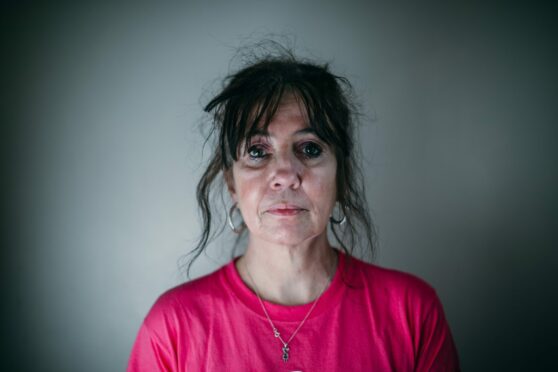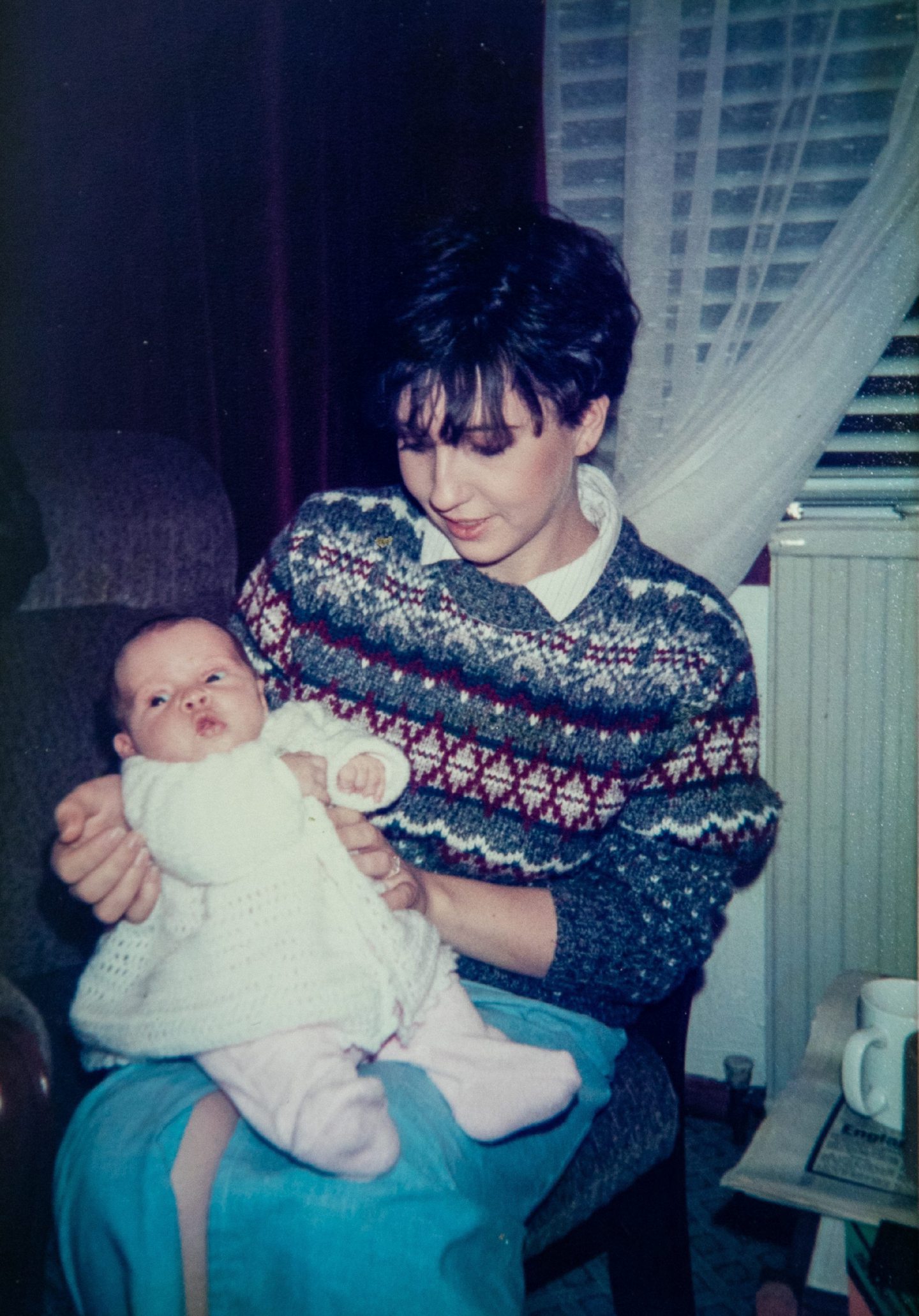
Police failed to act on a recommendation to formally warn a woman at risk from an abusive partner for five weeks before he murdered her.
Serial incompetence, carelessness and a lack of urgency meant officers failed to tell Louise Aitchison about her partner’s history of violence against women. An investigation by police watchdogs later found the warning could have saved her life.
It was the most serious in a litany of official failures leading to her murder in April 2020, including officers failing to properly assess the risk; failing to include crucial contact details in forms; failing to read reports; failing to meet guidelines; and, ultimately, failing to warn a vulnerable woman her partner was a dangerous man until it was too late.
Today, speaking publicly for the first time about the needless loss of her daughter, her mother charts the trail of official errors that led to her daughter’s death. Police Scotland apologised to Caroline Lyon for officers’ “shortcomings” but none are thought to have been disciplined after inquiries by the national force and the Crown Office.
Five days after the murder, the Lord Advocate asked the Police Investigations and Review Commissioner (Pirc) to investigate police contact with Ms Aitchison, 33, before her death. The watchdog concluded that had Police Scotland warned her about Darryl Paterson as agreed she “may have taken action to avoid him and ensure her safety, possibly preventing her death.”
Paterson was convicted of her murder and sentenced to 18 years in prison last January. However, Ms Lyon, 56, believes he is not the only person who should bear responsibility for her daughter’s death.
She said: “Paterson murdered my daughter but there were other hands on his knife. He did it but the people who allowed him to do it should share his guilt.”
Her daughter had just been moved to a new home in East Kilbride because she had been stalked and attacked by another man. Her mother said: “The police and the council failed to protect Louise. She had just been terrorised and attacked by a stalker and was really vulnerable. That’s why she was moved to what they called a safe house where she could be monitored and checked on. They might as well have put a target on her back because almost as soon as Paterson saw her, he smelled prey.”
Ms Aitchison, a dental nurse, moved from her flat in Canongate, East Kilbride in 2019 to a flat in Park Avenue after being terrorised in her previous home by a stalker.
However, within weeks of moving in, she was targeted by Paterson, 37. Police visited the flat on March 24, 2020 and, given Paterson’s history of violence, including domestic abuse convictions in 2016 and 2017, believed she could be at risk.
An officer submitted a “Power to Tell” application under the Domestic Abuse Disclosure Scheme. The scheme allows potential victims of abusers known to police to be warned of their violent history. However, not only did the officer handling that request and a detective inspector wrongly assess the risk as low, they failed to record the risk assessment on the database.
More than two weeks later, on April 9, it was finally agreed Ms Aitchison should be told about Paterson’s history but officers had failed to include her current mobile number and address when recording the decision on the database. They also failed to give it an incident number or make clear the disclosure was still outstanding to anyone accessing the report. The mistakes would ensure the warning was never given.
Despite guidelines demanding that warnings are given within 10 days of the decision, officers did not even attempt to reach Ms Aitchison for 14 days and then only by phone – because of Covid, apparently – but because her number had not been listed she was never contacted and never warned.
Even after she made a 999 call at 10.45pm on Monday, April 28, 2020 begging officers to remove Paterson from her flat, officers failed to warn her about his history, arrest him, or suggest she might be at risk. After checking the database, an officer did not access the disclosure warning report because he claims to have wrongly thought it was restricted access because it had no incident number attached. Paterson was allowed to leave but returned within the hour, when he killed Ms Aitchison with a knife, inflicting injuries so extensive her mother was advised not to see her body.
A letter to her mother from the Crown Office in October detailed the findings of Pirc and Police Scotland’s response when the force accepted its failures but insisted it might not have been “appropriate” to warn Ms Aitchison on the night she 999 called officers to her flat and said she may have known about Paterson’s past anyway, a claim categorically denied by her mother.
She said: “If she knew what he’d done, I don’t believe my daughter would have had anything to do with that man. Paterson made himself out to be a caring man. Louise’s diaries are filled with notes and recipes from the meals he made her. I’ve searched for any signs or doubts she had, and can find nothing. It is quite wrong for police to suggest otherwise.”
The police said: “Regardless of whether Louise was aware of his abusive behaviour, Police Scotland has acknowledged being provided such information may have had the ability to inform her decision-making.”
Her body was finally found on April 30 after officers had visited her flat six times but failed to force entry. Meanwhile, Paterson went on a two-day drink and drugs binge. He repeatedly tried to give himself up but police refused to arrest him despite being told he had a knife and had done something “really bad”. Instead of being put in a cell, Paterson was taken to a psychiatric unit within Hairmyres Hospital but was discharged within hours.
Ms Aitchison’s mother yesterday said she was dismayed to learn how police had talked among themselves about warning her daughter but failed to tell her of the danger she was in. She said: “For a whole five weeks after finally registering that Paterson had moved in with Louise, the police talked among themselves about telling her she was in danger from him, but missed chance after chance to do so.”
Last April, then assistant chief constable Judi Heaton, now retired, and Detective Superintendent Allan Burton visited Ms Lyon to “talk through police actions in the investigation and apologise for our shortcomings.”
Ms Lyon said they apologised for 18 different errors, adding: “I’ve listened to their excuses and half-hearted apologies and explanations about what should have been done and how they will learn from their mistakes, but I’m not prepared to be a silent witness to the murder of my daughter for a moment longer.
“For Louise, and for all the other vulnerable women in the same position and in the same danger, I cannot stand in silence. Louise’s life meant everything to me and her death must mean something, too. It was needless and it shouldn’t have happened.
“All the promises about changing procedures and improving training are just words. This is not about one or two officers making one or two errors, it is about how the police are managed. It isn’t one or two mistakes, it’s a whole culture. If they think I’m going away quietly, that’s another big mistake and they will need to learn from that one, too.”
The mum of three says the impact on her family has been “utterly devastating”: “Louise was a ray of sunshine in all our lives, always ready to help with her sister Stephanie, who has cerebral palsy, and the two of them were always going to concerts.
“Louise doted on Stephanie and had promised she would always look after her if I ever became unable to do so. That certainty has been taken from Stephanie along with the sister she loved. Louise always saw the good in people. She just wanted to help others and was in her element when she travelled to India a few years ago to deliver specialist dental care to children in the slums there.
“She was a loving, trusting girl.”
Ms Aitchison, 33, who was just 4ft 11ins, met Paterson, who lived two closes from her new, supposedly safer flat, when she was walking her dog, who is now looked after by her mum. Her mother said: “He just wasn’t the usual sort of clean-cut good-looking guy Louise would have dated. I instinctively felt there was something not right about him. I did not trust him. But lockdown started and from seeing Louise every single day, we suddenly couldn’t see her very much unless she was dropping in a prescription for her sister.
“All I could do was stay in touch by phone and message her. Paterson promised me he would take good care of my little girl. His words turned my stomach. I just felt he was delighted he now had full control.”
She remembers the last time she saw Louise, her bubbly daughter was walking with her dog down the garden path: “It was a few days before she was murdered. She waved back to me and that would be the last time we’d see each other. Louise’s injuries were so severe I wasn’t even allowed to see her, to touch her hair or stroke her face. She had to have a closed coffin. We never even got the chance to say goodbye. I’m tormented by that last year of her life.”
Finally, she became so concerned at not hearing from her daughter for several days, she went to her flat, unaware her body was inside. She returned home after getting no answer. Meanwhile, Paterson had already confessed to friends and his sister and tried to give himself up. It was only when he returned to East Kilbride police station for a second time that officers forced the door on Ms Aitchison’s flat.
A neighbour alerted her mother to the police activity, but she says it was at least two hours before officers eventually told her about “a fatality”. She said: “Those two hours felt like 200 years. Every breath I took in I tried to reassure myself Louise was safe. Every breath out I convinced myself she was dead. It was torture. But even when the police came, they still did not tell us. They asked what tattoos she had but refused to say what had happened. They said they wanted to wait for a family liaison officer.
“But by that time, the whole town was aware Louise had been murdered, and friends were contacting social media sites to take down the message to try and protect me.”
Ms Lyon said it was Friday, May 1, before she was eventually told her daughter had been murdered and only learned of the full extent of her daughter’s injuries in court: “It seemed we were the last to be considered. I felt unprepared for that, unsupported. Sitting in that cold courtroom surrounded by strangers and learning about Louise’s injuries for the first time was unbearable and I still suffer flashbacks to that day.”
Yesterday, Police Scotland declined to comment when asked if disciplinary action had been taken against any officer for the failures before the murder. Instead, Chief Superintendent Alan Waddell, Local Policing Commander, referred to the previous apology for “shortcomings” and again suggested Ms Aitchison might not have acted on a formal warning even if it had been delivered as decided three weeks before she was murdered.
He said: “Although we decided to proactively tell Louise about Paterson’s past offending, the information was never delivered. We do not know what Louise would have done with this information but she should have been given it.
“We have reviewed the circumstances and improved our systems and procedures to ensure we pass on disclosures under the scheme quickly and effectively.”
The Crown Office and Procurator Fiscal Service said a Fatal Accident Inquiry is still under consideration, almost three years after a murder which exposed serious concerns about a system designed to protect some of the most vulnerable women in Scotland. It said: “A report from the Police Investigations and Review Commissioner is currently under consideration by the Scottish Fatalities Investigation Unit. The investigation is ongoing and the family will continue to be updated.”
Pirc said its report was delivered to the Crown in August 2020 and declined to comment on whether it recommended further action against officers involved. South Lanarkshire Council offered sympathy to Ms Aitchson’s family but declined to discuss her relocation to a supposedly-safer flat.
East Kilbride MP Lisa Cameron said: “This is a hugely disturbing case not only because of the huge number of failures already admitted by Police Scotland but also because of the number of unanswered questions which remain.
“I will be writing to the Justice Minister to ask hard questions about how a system specifically designed to prevent cases like this managed to let Louise and her grieving family down not just once, but so many times.
“There must be an inquiry, involving the police and every other agency with an interest, to ensure we have absolute transparency and absolute faith that every possible change has been made to systems, procedures and training to ensure something like this can never happen again.
“The police say they’ve made those changes. Unfortunately, their actions so far mean everyone needs more assurance than that. Whatever has been done and whatever is still to be done, it is tragically all far, far too late for Louise and her family.”
Failed and failed and failed. Again, again and again
In 2019, Louise Aitchison, 33, is moved from her home in East Kilbride, after being terrorised by stalker, to a flat in Park Avenue, where she is supposed to be given special attention as a vulnerable victim and witness.
Within weeks, she is targeted by repeat domestic abuser Darryl Paterson.
What follows is a litany of error and official failure leading to her murder.
- On March 24, 2020, police go to Louise Aitchison’s flat. An officer, aware of Paterson’s history, is concerned she may be at risk and makes a formal application for a disclosure order allowing her to be told.
- An inquiry officer and a detective inspector assess the risk as low before failing to log the application on the DSDAS database, in breach of guidelines.
- More than two weeks later, on April 9, a formal decision to warn her about Paterson’s past is taken and a “concern report” is added to the police database. However, officers fail to add Louise’s current mobile phone number and address. It also fails to log an incident number.
- Guidance demands disclosure warnings are delivered within 10 days of the decision and the system fails to flag up overdue notices.
- On April 23, 14 days after the decision, and under new pandemic procedures, an officer tries to make initial contact with Ms Aitchison by phone to arrange an appointment but her number is not on file.
- At 10.45pm on April 28, Ms Aitchison calls 999 to her flat because Paterson is refusing to leave. He is allowed to leave but returns within the hour and murders her.
- Over the next two days, Paterson tries to give himself up after going on a drink and drugs binge. Finding East Kilbride police station closed, he calls 999, claiming he plans to cut his wrists and tells officers he has done a “bad thing”. He is not arrested but taken to hospital and later released.
- Officers fail to check Ms Aitchison’s flat for hours and then do not to force the door. Her body will not be found for two days, after they apparently fail to check Paterson’s background or notice the reported concerns for her safety.
- The Police Investigations and Review Commissioner later says failing to issue the warning may have cost Ms Aitchison her life. Police Scotland admit it may have allowed her to make a “more fully rounded decision about her safety”.
- The force says systems have been changed and training improved but it is not thought disciplinary proceedings have been taken against any officer.

Enjoy the convenience of having The Sunday Post delivered as a digital ePaper straight to your smartphone, tablet or computer.
Subscribe for only £5.49 a month and enjoy all the benefits of the printed paper as a digital replica.
Subscribe
 © UNPIXS (EUROPE)
© UNPIXS (EUROPE)
